Press releases
PM holds consultation on housing needs of households left homeless following the 1988 earthquake
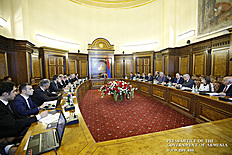 1670x1113px - 860 Kb
1670x1113px - 860 Kb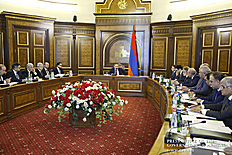 1670x1113px - 978 Kb
1670x1113px - 978 Kb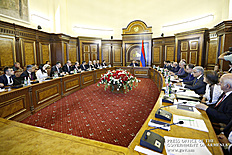 1670x1113px - 899 Kb
1670x1113px - 899 Kb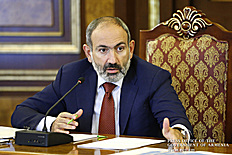 1670x1113px - 688 Kb
1670x1113px - 688 Kb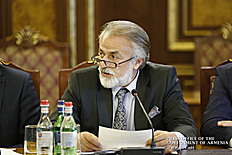 1670x1113px - 606 Kb
1670x1113px - 606 Kb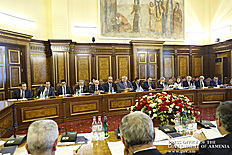 1670x1113px - 812 Kb
1670x1113px - 812 Kb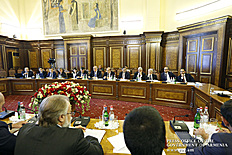 1670x1113px - 765 Kb
1670x1113px - 765 Kb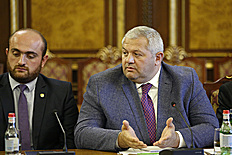 1670x1113px - 830 Kb
1670x1113px - 830 Kb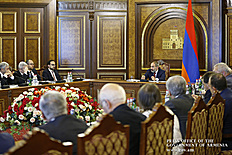 1670x1113px - 844 Kb
1670x1113px - 844 Kb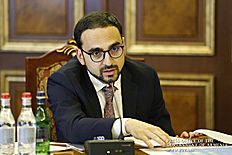 1670x1113px - 712 Kb
1670x1113px - 712 Kb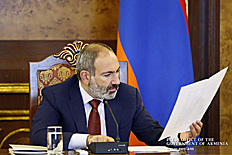 1670x1113px - 766 Kb
1670x1113px - 766 Kb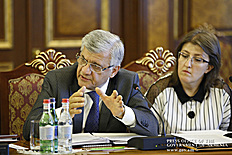 1670x1113px - 667 Kb
1670x1113px - 667 Kb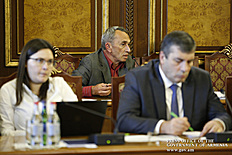 1670x1113px - 636 Kb
1670x1113px - 636 Kb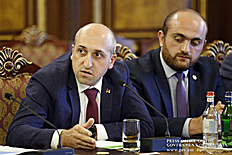 1670x1113px - 659 Kb
1670x1113px - 659 Kb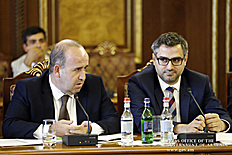 1670x1113px - 628 Kb
1670x1113px - 628 Kb
more 12 photos
Chaired by Prime Minister Nikol Pashinyan, a consultation was held in the Office of Government to discuss disaster zone-related issues.
Addressing the meeting, the Prime Minister noted: “Today we will discuss the problems of those households left homeless following the 1988 earthquake, in respect of which the State has assumed specific commitments. Our previous discussion led us to decide on the following: whether we should implement a house-building program for these citizens or we should give them housing purchase certificates. Why did this question arise? It arose because it turned out that the majority of the de jure registered beneficiaries live in rural communities, and we needed to draw up a map of the place of residence of these citizens in order to find the answer to the aforementioned question, and also to understand the situation about the housing market and make a decision under this very logic. The problem was to be addressed by the Urban Development Committee, which was supposed to provide information about it today. And we agreed that after making a decision on this issue, we would have to proceed to the next stage, abiding by urban planning standards in Gyumri, Vanadzor and other settlements in order to understand what measures we could take to achieve that goal, because at least we know that there are several sites in Gyumri intended for other purposes, which actually have a status of temporary housing settlements.”
Chairman of the Urban Planning Committee Vahagn Vermishyan and senior representatives of the committee reported on the fulfillment of the Prime Minister’s instructions that were given during meetings in June and July of this year on problems in the disaster area. According to information on 453 beneficiaries as discussed and analyzed with the regional administrations of Lori, Shirak and Aragatsotn Marzes, mapping of the place of residence of the beneficiaries was carried out. Out of 453 beneficiary families, 281 families live in 27 rural settlements of the Lori region, 148 families - 9 settlements of the Shirak region, 24 families - 11 settlements of the Aragatsotn region.
In order to understand the preference of the support format, together with the regional municipalities, a survey was conducted among the beneficiaries, according to which the beneficiaries are mainly inclined to such an approach that the amounts planned under the certificate of purchase of apartments will be allocated to him, and then she decided to buy an apartment, to build a new house in the village or to finish construction projects that were built in the years after the earthquake.
During the exchange of views that followed, a number of issues were discussed relating to a comprehensive approach, including the rejection of temporary huts as a result of the provision of state support, the introduction of effective control mechanisms, etc. Summing up the discussion, the head of government instructed the responsible persons to submit specific instructions regarding preferences in terms of the format of support and further actions.
Then an interim report was presented as developed by the task force set up under the Prime Minister’s decision of July 25, 2019, that had to develop a methodology for summing up the data collected on non-main buildings (temporary huts) in the settlements of the disaster zone.
Head of the Real Estate Cadastre Committee Sarkhat Petrosyan presented the results of the research: the data collected were analyzed, zoning was carried out through the geographic information system, a number of proposals were developed.
Prime Minister Pashinyan noted that the problems faced in the disaster zone should be approached in stages, and actions in connection with the settlements of temporary houses in Gyumri, Vanadzor, Spitak, Stepanavan should be considered from urban development perspectives. The Head of Government instructed those responsible to continue the discussion with the stakeholders and, as a first step, to explore the possibility of applying a common mechanism in this matter.